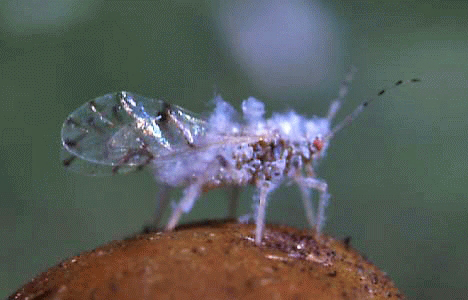September Snow? Woolly aphids here until end of summer
Published 8:09 am Tuesday, September 10, 2013

- The white flakes that seem to be causing a stir around Limestone County are tiny aphids, known as the Asian Hackberry woolly aphid. The non-native, soft-bodied, sap-sucking insects have been around since the mid- to late 90s.
Those venturing outside in Limestone County during the last week have more than likely saw white flakes fluttering through the summer sky, but it’s not snow. The white flakes that seem to be causing a stir are tiny aphids, known as the Asian Hackberry woolly aphid.
The aphids have been described as looking like anything from fluttering snow to flying pieces of cotton to ash from a nearby fire.
The non-native, soft-bodied, sap-sucking insects have been around since the mid- to late 90s, according Regional Extension Agent Chris Becker of the Alabama Cooperative Extension.
“Every year, toward the end of summer, you start to see them,” Becker said.
Becker believes they may be worse this year because of a mild summer and extreme rainfall. “It’s also been the third wettest July on record,” he said.
The Asian Hackberry woolly aphid is about one-tenth of an inch in diameter or less and secretes a pale bluish or white wax over their bodies.
The insect’s main host is the hackberry tree. The aphid is known for producing copious sticky honeydew. The honeydew not only creates a sticky mess, but also promotes the growth of blackish sooty mold — a parasitic fungus — on leaves and surfaces beneath infested trees.
“A lot of people have mentioned hackberry trees dropping leaves early,”
Becker said. “The trees are not dying, but the aphids — who are constantly feeding — cause the tree to abort leaves. Generally when aphids get in trees it is not an issue for the tree, especially if the tree is healthy.”
However, he said if the tree goes through a period of drought or it is stressed out by something else, the aphids could cause a problem.
Becker said the biggest issue to humans is the black sooty mold that leaves a film on homes, lawn furniture, patios, plants and cars.
“The aphids are not a big issue, but more a nuisance that we deal with,” Becker said.
Some might be wondering if the tiny aphids could be causing an outbreak in allergies. In Becker’s opinion allergies occurring now are most likely related to ragweed, which is in bloom.
For those wondering how long the aphids will stick around, Becker said we could expect them for at least four or five more weeks.





